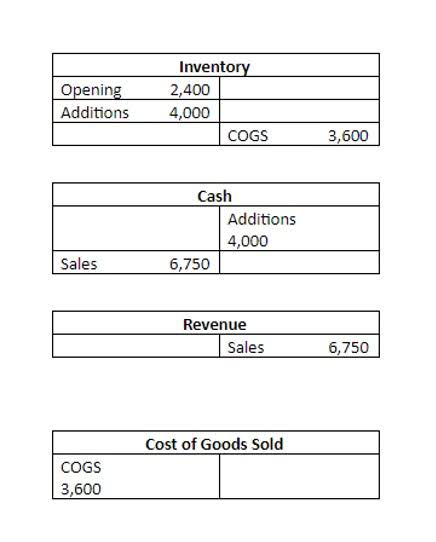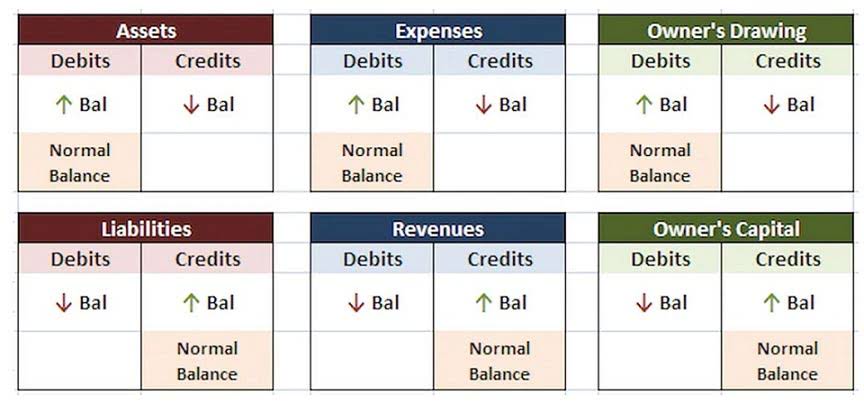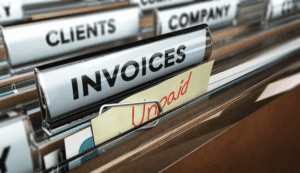The reports section lets you view and edit your inventory, taxes, sales, finances, and purchases whenever you need to. And finally, you can create and view any financial statement with the click of a button. Usually, that’s the case, but we at Deskera prioritize small business accounting.
Step 8: Closing the Books
These adjustments might include accrued income, accrued expenses, deferred income, and prepaid expenses. The accounting process provides valuable perspectives into an enterprise’s fiscal health and operational effectiveness. The data it generates – from profit ratios and operational costs to revenue patterns and cash flow – are critical for strategic choices.
Step 3: Identify Impacted Accounts
Thus, a key difference between the accounting cycle and the budget cycle is that the accounting cycle deals with transactions that have already occurred, while the budget cycle is forward-looking. Add accrued items, record estimates, and correct errors in the preliminary trial balance with adjusting entries. The toy store owner uses the nine steps of the accounting cycle to create financial statements and make financial decisions about their toy company. CPA firms can review or audit the financial statements and drill down to the underlying financial transactions and accounting records to test account balances.
3 Define and Describe the Initial Steps in the Accounting Cycle
In addition to identifying any errors, adjusting entries may be needed for revenue and expense matching when using accrual accounting. The first step in the accounting cycle is identifying transactions. Companies will have many transactions throughout the accounting cycle. Every individual company will usually need to modify the eight-step accounting cycle in certain ways in order to fit with their company’s business model and accounting procedures. Modifications for accrual accounting versus cash accounting are usually one major concern.
Steps in the Accounting Cycle
Most businesses generate balance sheets, income statements and cash flow statements. When the accounting period ends, you’ll adjust journal entries to fix any mistakes and anomalies found during the worksheet analysis. Since this is the final step before creating financial statements, you should double-check everything with the help of a new adjusted trial balance. Double-entry accounting is ideal for businesses that create all the major accounting reports, including the balance sheet, cash flow statement and income statement. The accounting cycle involves all of the financial transactions for a business. It refers to recording these transactions, as well as processing them.
An efficient accounting cycle is vital for the smooth operation of a company’s financial department. It ensures financial transactions are accurately and promptly recorded, organized, and analyzed. The accounting cycle is a systematic series of steps companies use to keep accurate and consistent accounting records. Understanding the accounting cycle is a fundamental aspect of financial management for businesses of all sizes. Following the accounting cycle is a standard practice that helps to ensure that all financial transactions are accounted for.
Computerized accounting systems and the uniform process of the accounting cycle have helped to reduce mathematical errors. The financial statements generated through the accounting cycle will be used by management to determine the financial position of the business and as a tool for decision making. In simple terms, an accounting cycle is a series of steps that allows companies to produce financial reports and track financial activities. Regardless of the scenario, an unadjusted trial balance displays all your credits and debits in a table. The total credit and debit balance should be equal—if they don’t match, there’s an error somewhere. The unadjusted trial balance is the initial version of the trial balance that hasn’t been analyzed for accuracy and adjusted as needed.
They consider every part of the accounting cycle, including original source documents, looking through journal entries, general ledgers, and financial statements. They may even be asked to testify to career paths outside of accounting their findings in a court of law. The accounting cycle is a process used to document and report on all financial transactions during an accounting period, which is commonly quarterly or annually.
To learn more, check out CFI’s free Accounting Fundamentals Course. The adjustments made in the previous step must place all debits and credits in balance in order for this step to be successful. Any accounts that are still not in balance by this step will need to be further investigated and corrected. Like any process, the accounting process steps begin with the acquiring of information to then be analyzed and ends with checking one’s work to ensure accuracy. The accounting cycle process is usually performed over a month, or a specified accounting period. Information obtained in one of the accounting process steps will be used in the successive accounting cycle steps.
Overall, determining the amount of time for each accounting cycle is important because it sets specific dates for opening and closing. Once an accounting cycle closes, a new cycle begins, restarting the eight-step accounting process all over again. This step is handled automatically by an accounting computer system. There are many closing activities, as detailed in our Closing the Books course. The accounting cycle is the actions taken to identify and record an entity’s transactions.
Its role in a company’s fiscal well-being and operational triumph is profound. That being said, accrual accounting offers a more accurate picture of the financial state of any given business, which is why in some cases, companies are obligated by law to use this method. You need to perform these bookkeeping tasks throughout the entire fiscal year. In this step, the adjusting entries made for accrual of income, accrual of expenses, deferrals under the income method, and prepayments under the expense method are reversed.
After reviewing the financial statements, the accountant is able to make additional adjustments and almost immediately obtain the revised reports. The software will also prepare, record, and post the closing entries. It will also reverse adjusting entries that have been designated to be reversed. After the company makes all adjusting entries, it then generates its financial statements in the seventh step. For most companies, these statements will include an income statement, balance sheet, and cash flow statement. Cash accounting requires transactions to be recorded when cash is either received or paid.
And even if you do, the software automatically spots it and notifies you of a mismatch. This step is only necessary when the ending balance https://www.bookkeeping-reviews.com/ doesn’t match up. Accounting errors usually happen from mathematical slips, incorrect posting, or inaccurate transcriptions.
The accounting cycle is used comprehensively through one full reporting period. Thus, staying organized throughout the process’s time frame can be a key element that helps to maintain overall efficiency. Most companies seek to analyze their performance on a monthly basis, though some may focus more heavily on quarterly or annual results.
- Next, you’ll use the general ledger to record all of the financial information gathered in step one.
- One of the main duties of a bookkeeper is to keep track of the full accounting cycle from start to finish.
- The ledger organizes entries by account, providing a snapshot of how each business transaction affects specific accounts.
- Not following the accounting cycle would likely lead to an accumulation of bookkeeping errors, which could cause severe problems for your business.
- After all the transactions have been posted to the general ledger in the appropriate accounts, Cynthia will prepare an unadjusted trial balance.
The accounts are closed to a summary account (usually, Income Summary) and then closed further to the capital account. Again, take note that closing entries are made only for temporary accounts. Real or permanent accounts, i.e. balance sheet accounts, are not closed.
To simplify the recording process, special journals are often used for transactions that recur frequently, such as sales, purchases, cash receipts, and cash disbursements. And, a general journal is used to record all those that do not fit in the special journals. After transactions have been identified, they have to be recorded. If a transaction is identified but it isn’t recorded, then it’s like it never happened at all. Depending on each company’s system, more or less technical automation may be utilized. Typically, bookkeeping will involve some technical support, but a bookkeeper may be required to intervene in the accounting cycle at various points.
This involves closing out temporary accounts, such as expenses and revenue and transferring the net income to permanent accounts like retained earnings. The balance sheet and income statement depict business events over the last accounting cycle. A cash flow statement, while not mandatory, helps project and track your business’s cash flow. The accounting cycle is an eight-step process that accountants and business owners use to manage the company’s books throughout a specific accounting period, such as the fiscal year. The federal government’s fiscal year spans 12 months, beginning on October 1 of one calendar year and ending on September 30 of the next.
To avoid these issues, your finances need to go through what’s known as the accounting cycle. This cycle accurately records every cent passing hands through the business. Yes, various accounting software can automate parts or even the entire process, making it more efficient and error-free. Understanding the accounting cycle is not just for accountants; it’s a fundamental tool that aids in the smooth running and growth of businesses across all sectors.
For the sake of our example, we’ll assume that the end of the accounting period is September 30th. Here’s what the previous journal entry would look like posted in the Ledger. The general ledger is essentially the backbone of your accounting system.
Modern accounting solutions often provide integration with other business software, ensuring a smooth and uniform data flow across diverse operations. Therefore, corporations must aim to maintain a robust and effective accounting process. By regularly examining fiscal statements, corporations can detect patterns or discrepancies that may indicate operational issues, such as unwarranted expenses or unprofitable offerings. This facilitates timely rectification and improves operational efficacy. This transparency allows internal and external parties to grasp the corporation’s fiscal status, performance, and cash flow, which are critical for enlightened decision-making. Some advantages of accounting are that it provides help in taxation, decision making, business valuation, and provides information to important parties like investors and law enforcement.
After collecting all of the financial transactions, Cynthia records each transaction in the general journal. A general journal is a journal where all financial transactions are recorded in chronological order as they occur. For example, Cynthia will record all of the company’s sales for each day in the general ledger. The accounting cycle is important because the reports generated during the accounting cycle are then used by management to make decisions regarding the operation of the business. Figure 3.7 includes information such as the date of the transaction, the accounts required in the journal entry, and columns for debits and credits. Once the T-accounts have been adjusted, a new trial balance called the adjusted trial balance can be created to reflect the new changes.
This step is also where bookkeepers will ensure that debits and credits are equal. This step also allows businesses that use accrual accounting to adjust for revenue and expenses. Once all the nine steps are performed and the financial statements are analyzed, the business owner may realize they need to shut down their business. It starts with recording all financial transactions throughout that accounting period and ends with posting closing entries to close the books and prepare for the next accounting period.
An effective accounting process can identify inefficiencies or inconsistencies in business operations. Business transactions identified are then analyzed to determine the accounts affected and the amounts to be recorded. To gain a better understanding of this, consider an error in the general ledger. This entry needs to reference where the error exists so that anyone reviewing it can verify it for accuracy.















